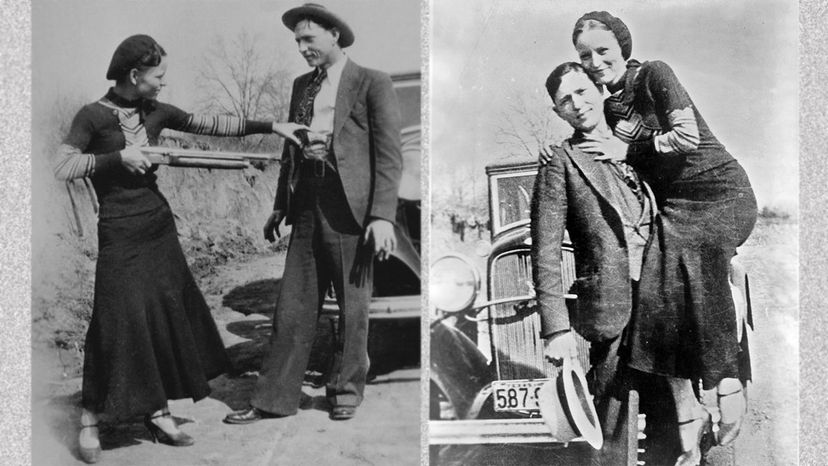You'll note that Bonnie didn't share Clyde's last name. This wasn't a proto-feminist statement of independence. It reflected the minor detail that the two notorious fugitives weren't married. Or, at least, not to each other. Bonnie was officially the wife of a violently abusive crook name Roy Thornton, who was serving time for robbery. Bonnie hadn't taken his name either. She'd married him when she was only 16, soon thought better of it, and separated from him a few years later.
Still, neither was divorced, so Bonnie and Clyde were officially living in sin, but that was the least of their outlaw behavior. By May of 1934, the couple was wanted on multiple charges of theft and murder, and had broken the law in just about every way possible. They'd also become popular criminal pinups thanks to a cache of glamorous photos discovered by the cops at one of their previous hideouts. But there was little glamour in their lives that spring morning in 1934.
The reason Bonnie stayed in the car while Clyde went inside the diner was because Bonnie could barely walk at all. About nine months earlier, Clyde had crashed a different stolen car into a river and the battery acid splashed all over one of Bonnie's legs. They managed to save her leg from complete ruin with the help of some baking soda, but not before the acid ate it down to the bone in some places. Things had deteriorated to the point that Bonnie had to hop rather than walk to get around, and as often as not, Clyde had to carry her.
And as we already mentioned, Clyde himself had a pronounced limp. Some years earlier while serving time in a penitentiary, he'd cut off two of his toes to avoid the Eastham Prison Farm's brutal forced labor regime. All in all, lugging Bonnie in to get some breakfast sandwiches would have been unnecessarily strenuous, and so she waited in the car.
As Clyde pulled out of the parking lot, Bonnie ate a few bites of her sandwich and wrapped the remainder in the paper napkin it came with. A short time later, Bonnie and Clyde were speeding along at 60 miles per hour (97 kilometers per hour) in Ruth Warren's stolen car down a back-country straightaway when they spotted a truck that looked like it'd broken down. The driver was standing next to the vehicle looking forlorn. They knew the truck and driver well. It was Ivy Methvin, whose son, Henry, was part of Bonnie and Clyde's little gang. Lately, Bonnie and Clyde, Buck Barrow, and the rest of the Barrow Gang spent many an evening visiting in the Methvins' house. Clyde slowed the car to see if he needed help.


